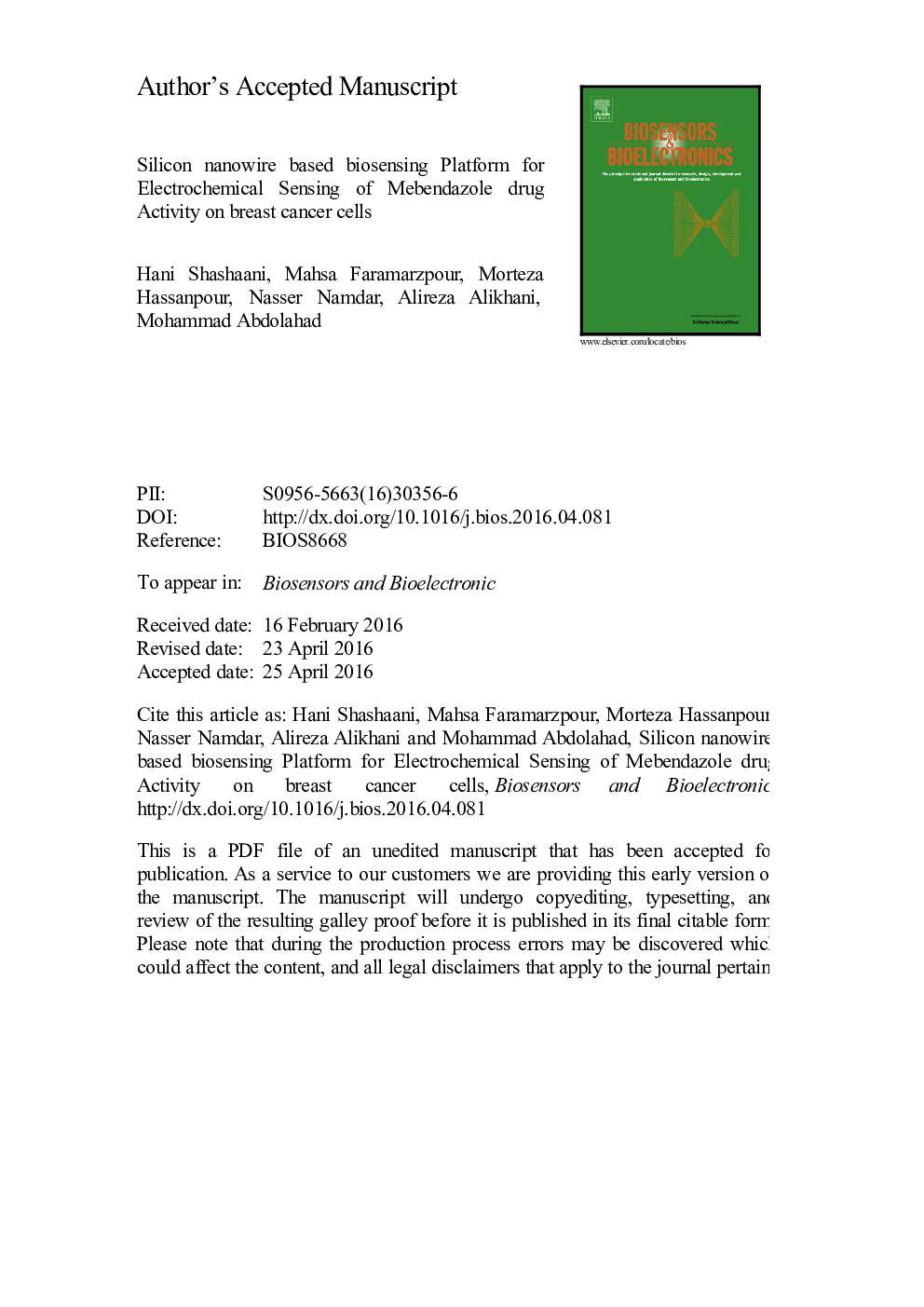| Article ID | Journal | Published Year | Pages | File Type |
|---|---|---|---|---|
| 7230422 | Biosensors and Bioelectronics | 2016 | 25 Pages |
Abstract
Electrochemical approaches have played crucial roles in bio sensing because of their Potential in achieving sensitive, specific and low-cost detection of biomolecules and other bio evidences. Engineering the electrochemical sensing interface with nanomaterials tends to new generations of label-free biosensors with improved performances in terms of sensitive area and response signals. Here we applied Silicon Nanowire (SiNW) array electrodes (in an integrated architecture of working, counter and reference electrodes) grown by low pressure chemical vapor deposition (LPCVD) system with VLS procedure to electrochemically diagnose the presence of breast cancer cells as well as their response to anticancer drugs. Mebendazole (MBZ), has been used as antitubulin drug. It perturbs the anodic/cathodic response of the cell covered biosensor by releasing Cytochrome C in cytoplasm. Reduction of cytochrome C would change the ionic state of the cells monitored by SiNW biosensor. By applying well direct bioelectrical contacts with cancer cells, SiNWs can detect minor signal transduction and bio recognition events, resulting in precise biosensing. Our device detected the trace of MBZ drugs (with the concentration of 2Â nM) on electrochemical activity MCF-7 cells. Also, experimented biological analysis such as confocal and Flowcytometry assays confirmed the electrochemical results.
Related Topics
Physical Sciences and Engineering
Chemistry
Analytical Chemistry
Authors
Hani Shashaani, Mahsa Faramarzpour, Morteza Hassanpour, Nasser Namdar, Alireza Alikhani, Mohammad Abdolahad,
